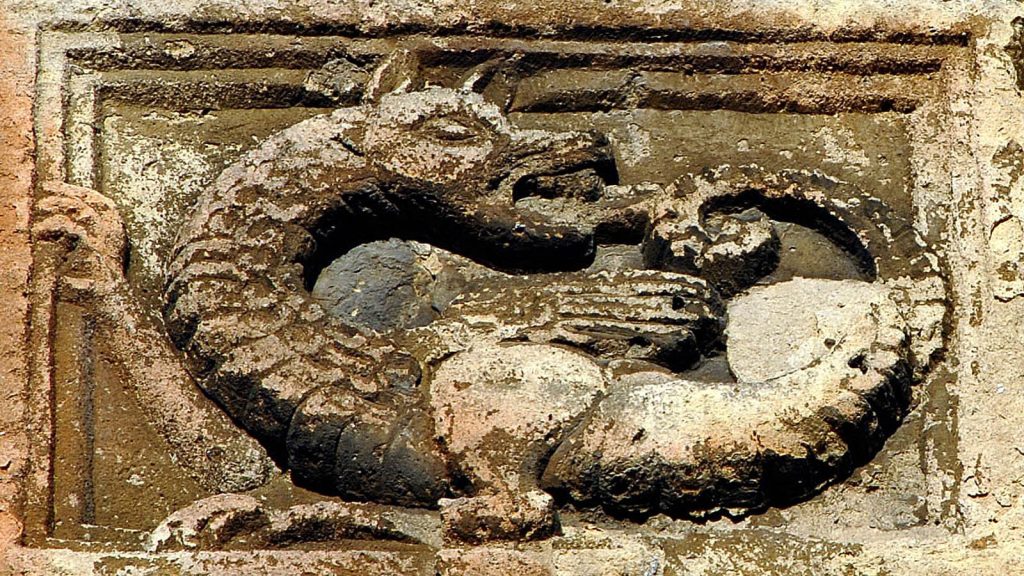Ouroboros
- Ancient Egypt 1600BC, reading sun disks and mapping their travel
- Ra’s partnership with Underworld’s Osiris, two snakes each with tails in mouth, cyclical nature of life
- Ancient agreements, biblical?
- Tablet – Tabula Rasa
- blank slate ideology, all experience is learned experience
- coming back to blankness, dust to dust
- a pristine existence unadulterated by the spin
- scrawled on tabula rasa to fade away like writing in the sand buoyant and breathing silent and seething history washed away before reading
- Gnosticism, personal spirituality, material reality is flawed and inherently evil, God is hidden, salvation is achieved
- gnostic and agnostic
In relation to my initial idea of a cyclical human nature, the serpent ‘Ouroboros’ is one of the oldest egyptian symbols, depicting the concept of birth, death, and rebirth. Translated into English it means “to devour ones tail” or “all is one”. It is interesting looking into cyclical beliefs from thousands of years ago, as the Egyptians beliefs and ideologies would translate into symbols that would host certain meanings. Ouroboros first appeared on the tomb of Tutankhamun, and was believed to renew itself everyday.

The symbol is similar in its meaning to the Yin and Yang – communicating life and death, light and dark, to put it simply. The sun God ‘Ra’ and the underworld’s God ‘Osiris’ were believed to be in a partnership, where Ra would travel from the sky to the underworld and back again everyday, essentially growing from birth to death and regenerating when the next day came. I feel like Ouroboros has retained its relevance, as we as humans continue to cycle through phases of social evolution (or devolution), before returning to the same point we started, just in a different context. The current times are a good example of this – the conception of the internet drastically shifted perspective, social interaction, and the ability to access knowledge, but now that this is engrained within our society it seems we are starting again from a new blank slate – augmented reality and artificial intelligence are the new kids on the block so to speak, but in 20-30 years it feels as though we will be back at this point, anxious of the unknown that we have fostered and globally reborn to enter a new phase.
The Tabula Rasa loosely translates to ‘clean slate’, and accompanies this idea of a cycle, with every day (or the end of every cycle) resembling a fresh start. I feel that situating this ‘blank slate’ ideology within the framework of a 21st century capitalist society is interesting, because social media, CCTV, AI and coding broaden our opportunity to take in knowledge as learned experience in an infinite manner. I think there are a lot of parallels between these ancient symbols and daily life in the age of digital domination, for example the tabula rasa as a blank slate is mirrored by opening up Java Script, for instance, and having the capability to tell a machine what it should do, inputting information it can learn from in a very similar way to how we as humans learn from the input of information around us.
“Let us suppose the mind to be, as we say, a tabula rasa, void of all characters, without any ideas. How comes it to be furnished? Whence comes it by that vast store, which the busy and boundless fancy of man has painted on it, with an almost endless variety? When has it all the materials of reason and knowledge? To this I answer, in one word, from experience.” (John Locke, ‘An Essay Concerning Human Understanding’, 1690)
https://www.egypttoursportal.com/en-gb/the-ouroboros-symbol/